.

How To Prevent and Combat Cannabis-Induced Anxiety
If you've been using cannabis for a long time, you're likely very familiar with weed anxiety. In this article, we delve into its causes, how to combat it, and how to prevent it in the first place. New cannabis users in particular will benefit from this knowledge, though anyone can stand to profit from these tips.
Contents:
- What is weed anxiety?
- How to identify weed anxiety
- How to stop weed anxiety
- How to prevent weed anxiety
- Why do i get anxiety when i smoke weed?
- Why does marijuana anxiety affect some people and not others?
- How much thc will start triggering bad effects?
- Don’t let anxiety from smoking weed ruin your appreciation for the herb
Weed and anxiety have quite a unique and interesting relationship. Multiple studies[1] have examined cannabis, or its constituents, as a potential form of anxiety treatment, with some experts looking to develop novel cannabinoid-based anxiolytic agents[2].
But at the same time, cannabis—more specifically, THC—also bears the reputation of a paranoia trigger. Similarly, some studies[3] link the magic herb with the development of anxiety disorders.
It’s essential we point out that medical and recreational users alike can fall victim to supposed weed anxiety. This makes knowing how to deal with the condition all the more important. With that in mind, let’s delve into the phenomenon of weed anxiety and why it happens. Then, we’ll introduce some ways to stop it in its tracks and prevent it from happening in the future.
What Is Weed Anxiety?
Certain life situations bring about anxiety. Those moments before you step on stage to deliver a keynote speech, you feel your palms sweating, your heart beating faster. You lose focus on the present moment and instead worry incessantly about what’s to come.
These are all normal reactions. And once you compose yourself and start breathing properly, you shake off those nagging doubts and insecurities.
There’s a bit of a difference with weed anxiety. Much like “greening out”, the symptoms are uncomfortable—sweating, shaking, fatigue—except weed anxiety primarily elicits mental distress as opposed to physical. That being said, anxiety is known to cause stomach discomfort, nausea, and even vomiting.
Apart from common knowledge, researchers have established an association between cannabis use and anxiety. In a community survey[4] conducted in Australia, for example, 22% of respondents reported panic attacks after cannabis use.
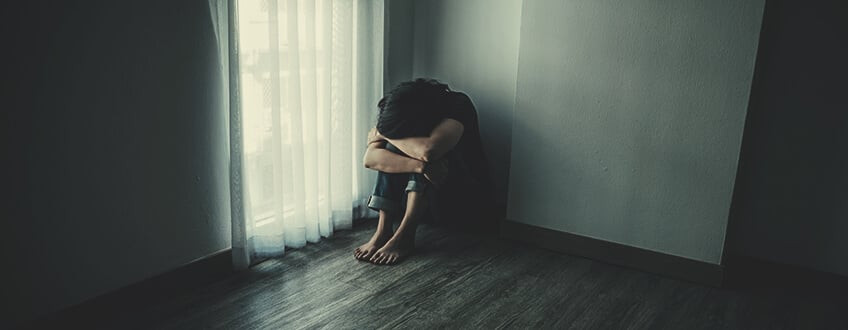
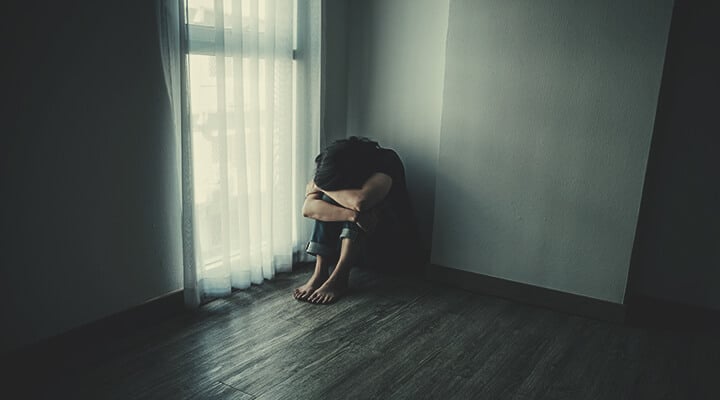
How To Identify Weed Anxiety
The symptoms of weed anxiety can be difficult for some to discern, but there are certain telltale signs.
It usually starts out with a barrage of negative thoughts brewing in the mind. These are troubling, vexing ruminations that are difficult to shake off. It then manifests into physical symptoms, including shortness of breath (which itself triggers anxiety) and an inability to move around comfortably.
People who go through episodes of weed anxiety feel like they’re trapped in their own head. Their thoughts are way too loud, which hinders them from focusing or following what’s presently going on.
A classic sign of paranoia among recreational cannabis smokers is checking outside the window for the cops. The worry of having done something illegal can be overwhelming enough to cause panic.
How To Stop Weed Anxiety
The first thing to keep in mind if you experience a bout of anxiety after smoking weed is to accept what’s going on.
This may sound difficult, but it’s a key aspect of anxiety reduction even when weed isn’t involved. From here, it will be easier to take a few breaths and get back to feeling normal. But if that doesn’t help, here are some other tips to try out:
| Take a cold shower | At the very least, pour some cold water on your neck. That sudden rush can help you snap out of your current dazed and confused state. |
| Eat or drink something | This will help shift your focus away from being in a state of panic. |
| Distract yourself | Take a walk around the neighborhood. Put on some relaxing music. The goal here is to keep your mind off those thoughts that ramp up anxiety. |
| “Force” a positive mindset | Remind yourself that this is all in the mind and that you’ll be okay. Sometimes, kindly nudging yourself to adopt a positive mindset can ease you down and put you in a better disposition. |
| Take a cold shower |
| At the very least, pour some cold water on your neck. That sudden rush can help you snap out of your current dazed and confused state. |
| Eat or drink something |
| This will help shift your focus away from being in a state of panic. |
| Distract yourself |
| Take a walk around the neighborhood. Put on some relaxing music. The goal here is to keep your mind off those thoughts that ramp up anxiety. |
| “Force” a positive mindset |
| Remind yourself that this is all in the mind and that you’ll be okay. Sometimes, kindly nudging yourself to adopt a positive mindset can ease you down and put you in a better disposition. |
-
Will Weed-Induced Anxiety Go Away?
Yes! Like any impairing recreational substance, you’ll feel the effects wane over time.
In the case of weed-induced anxiety, the duration of symptoms depends largely on the method of intake—the effects of edibles, including negative outcomes, last hours longer than inhaled or sublingual cannabis. So with that in mind, it can take between 10 minutes and a couple of hours to feel composed again. It may feel like an eternity, but by following the steps mentioned in the previous section, you’ll do alright.
Ultimately, you’re going to be just fine. But the discomfort can be distressing, especially for new cannabis users.
How To Prevent Weed Anxiety
Prevention is always better than a cure, as the adage goes. Here are a few ways to ward off potentially traumatising weed anxiety episodes.
| More CBD, less THC | Pick a strain with a THC:CBD ratio that favors the latter. A ratio of 1:1, also known as the “golden ratio”, will still get you high, but the psychotropic force will be more tame thanks to the presence of CBD. |
| Microdose | This is geared specifically to first-time users who are most susceptible to weed anxiety. It’s okay to take smaller doses for your maiden cannabis voyage. This way, you get to familiarise yourself with its effects much better. This is especially pertinent when it comes to taking edibles for the first few times. |
| Set up a comfortable environment | Ideally, you want to be in a controlled space with people you trust. Set up the lights in a way that creates a chill vibe. Also, have some food nearby for when the munchies hit, and some water for the cotton mouth. |
| More CBD, less THC |
| Pick a strain with a THC:CBD ratio that favors the latter. A ratio of 1:1, also known as the “golden ratio”, will still get you high, but the psychotropic force will be more tame thanks to the presence of CBD. |
| Microdose |
| This is geared specifically to first-time users who are most susceptible to weed anxiety. It’s okay to take smaller doses for your maiden cannabis voyage. This way, you get to familiarise yourself with its effects much better. This is especially pertinent when it comes to taking edibles for the first few times. |
| Set up a comfortable environment |
| Ideally, you want to be in a controlled space with people you trust. Set up the lights in a way that creates a chill vibe. Also, have some food nearby for when the munchies hit, and some water for the cotton mouth. |
Why Do I Get Anxiety When I Smoke Weed?
To answer this question, we’ll get a bit scientific. When THC enters the body, it binds to the two main receptor types of the endocannabinoid system—CB1 and CB2.
For those unfamiliar, the endocannabinoid system (ECS) is a regulatory system that extends throughout the entire body. Based on studies[5], it appears to play a key role in modulating brain function, the endocrine system, and immune tissues. Research also shows a connection between the ECS and the secretion of reproductive and stress hormones.
Upon stimulating the ECS, THC starts to induce its noticeable effects. Here is what’s believed to happen after you smoke, vape, or otherwise ingest THC.
-
The Amygdala
The amygdala is the region of our brain that plays a role in both conditioned and unconditioned fear generation. It’s also responsible for both fear extinction and conditioned inhibition.
Recent research[6] discovered the presence of a multitude of CB1 receptors within the amygdala. This has led experts to find a connection between a possible provocation of an emotional reaction upon THC intake. As a result, anxiety when smoking weed with lots of THC makes more sense.
-
The Central Nervous System
Like the amygdala, the central nervous system is home to cannabinoid receptors, particularly CB1—which THC binds with to elicit psychotropic effects.
So where does anxiety fall into all of this? A 2014 study[7] investigated the relationship between THC, muscle spasms and bladder problems. Despite some promising findings, one of the adverse effects among respondents was anxiety. Along with psychosis and dysphoria, these effects were all associated with higher concentrations of THC.
-
The Cardiovascular System
Research[8] from 1994 claims that panic disorder and chronic anxiety increased cardiovascular disease morbidity. The study highlights the connection between chronic cannabis use and chronic anxiety, noting how both could be an “indirect contributor” to cardiovascular disease mortality.
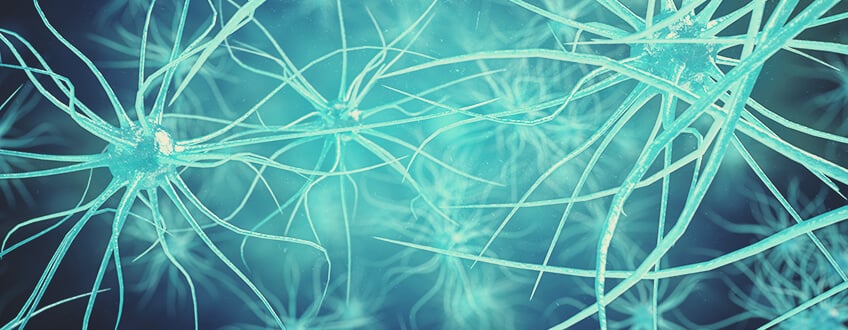
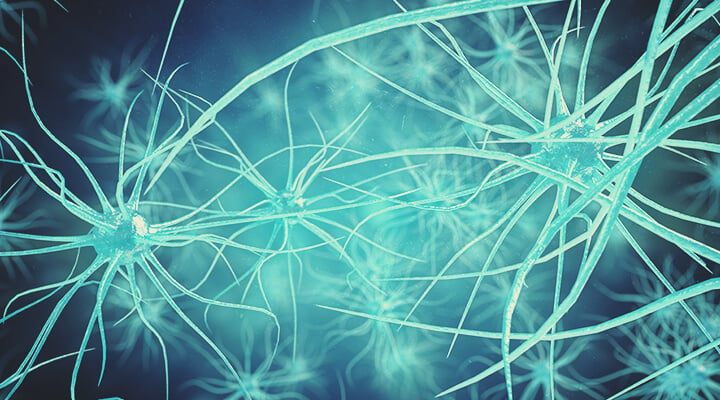
Why Does Marijuana Anxiety Affect Some People and Not Others?
This is a very common question, and a very valid one at that. However, there isn’t a short and straightforward answer, as there are several factors at play.
-
Genetics
Cannabis is beloved for bringing about some positive effects and sensations. When taken at a specific dose, THC appears to induce relaxation while providing mental stimulation. Certain strains are known for the creativity and serenity they inspire in users.
But as a 2019 study[9] suggests, the positive effects appear to be prevalent among those who are THC-sensitive in the front part of their brain. Those who are THC-sensitive in the posterior part of the brain appear to experience more anxiety. Other perceived unfavorable outcomes for these people include paranoia and negative emotions.
-
Age
As our body ages, so does our brain. And with that, our endocannabinoid system is affected as well.
Receptor density, for instance, tends to decrease[10] as we grow older. And according to academic Dr Gregory Gerdeman, PhD[11], cannabis could affect people differently depending on their age.
According to Gerdeman, a 30-year-old individual may feel more paranoid after smoking cannabis than they did in their 20s. As he notes, the endocannabinoid system in the brain “may not be at the same set point”.
-
Sex
It appears sex may also play a role in weed-induced anxiety. As a 2014 study[12] suggests, estrogen may increase cannabis sensitivity.
The study was conducted on female rats, where it found a connection between estrogen and increased sensitivity to THC. Specifically, estrogen appeared to have an interaction with THC’s physical soothing qualities.
Such sensitivity could potentially increase a woman’s vulnerability to THC-induced anxiety and paranoia. However, the study also suggests that females develop a tolerance to THC a lot quicker than their male counterparts.
-
Tolerance
Just like with alcohol, people tend to develop a tolerance to cannabis after a period of use. While genetics and the brain’s neural makeup play a role, usage is still the biggest factor.
Studies suggest that as the brain gets frequently exposed to THC, the CB1 receptors become desensitised[13]. What happens next is a process called internalisation[14], where the receptors retract. Ultimately, it results in a less-intense THC experience.
Developing a tolerance could be both a good thing and a bad thing. If you’re the type who enjoys being high, a comparatively weak experience could be irritating. If that’s the case, you may want to take a tolerance break and allow your system to reset and be free from THC for a short while.
Some experts believe four weeks[15] is enough time to repopulate cannabis receptors in the brain back to normal levels. So you don’t even need to abstain for that long!

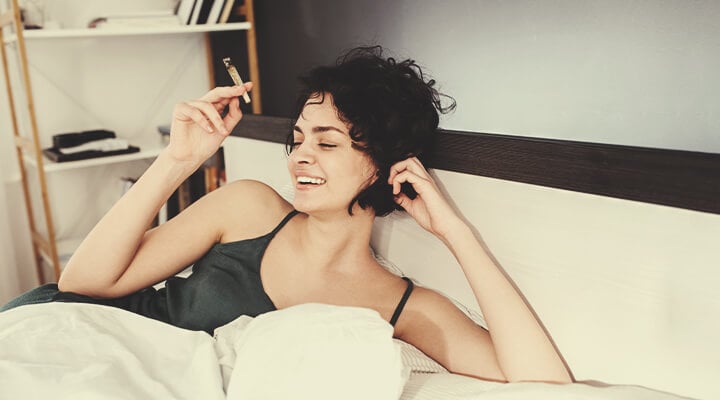
-
Mood
We don’t need high-quality scientific studies to understand that being anxious directly before smoking cannabis makes someone more likely to be anxious after the fact. Although some individuals may feel the weight lifted off their shoulders after some hearty tokes, others will only feel their negative thoughts exacerbated.
Like any substance, it’s always better to partake when you’re in a positive state of mind.
How Much THC Will Start Triggering Bad Effects?
Science actually has an answer to this question, at least according to a 2017 study[16]. A group of 42 participants was divided into two groups. The “low-dose” group received a 7.5-milligram capsule of THC, whereas the “moderate-dose” group received a 12.5-milligram capsule.
Participants were then given 10 minutes to prepare for a mock job interview, after which they were made to go through a five-minute interview where they weren’t given feedback of any kind.
The final test was for the participants to count backward from a five-digit number by subtracting 13. They were required to do this for five minutes.
Participants who received the lower dose reported feeling less stressed. Meanwhile, those who took the moderate dose experienced “greater negative mood” before and during the aforementioned tasks.
So if you’re a beginner, consider starting with a dose at the lower end of the spectrum (around 5–7.5mg of THC). This may even be just a few puffs from a joint!
Don’t Let Anxiety From Smoking Weed Ruin Your Appreciation for the Herb
Cannabis has a high likelihood to cause anxiety and paranoia. And while you may feel like you’re about to experience something life-threatening, worry not. It’s all a byproduct of several factors mentioned above.
If you want a non-anxious, non-traumatising experience with weed, your best move would be to start low and slow. As soon as you perceive yourself developing a tolerance, you can ramp up your intake accordingly.
Also, consider incorporating more CBD, and potentially less THC, into your smoke sessions. Most importantly, relax and enjoy. It’s not a contest to see who can smoke the most!
Be sure to keep our tips in mind as you go along your cannabis journey, because regardless of your experience, knowledge is power.
- The role of cannabis in treating anxiety: an update : Current Opinion in Psychiatry https://journals.lww.com
- Cannabinoid-related agents in the treatment of anxiety disorders: current knowledge and future perspectives https://www.ncbi.nlm.nih.gov
- A positive association between anxiety disorders and cannabis use or cannabis use disorders in the general population- a meta-analysis of 31 studies | BMC Psychiatry | Full Text https://bmcpsychiatry.biomedcentral.com
- A community survey of adverse effects of cannabis use - PubMed https://pubmed.ncbi.nlm.nih.gov
- [The role of the endocannabinoid system in the regulation of endocrine function and in the control of energy balance in humans] - PubMed https://pubmed.ncbi.nlm.nih.gov
- Multiple Mechanistically Distinct Modes of Endocannabinoid Mobilization at Central Amygdala Glutamatergic Synapses https://www.ncbi.nlm.nih.gov
- Systematic review: Efficacy and safety of medical marijuana in selected neurologic disorders https://www.ncbi.nlm.nih.gov
- Symptoms of anxiety and risk of coronary heart disease. The Normative Aging Study - PubMed https://pubmed.ncbi.nlm.nih.gov
- The Bivalent Rewarding and Aversive properties of Δ9-tetrahydrocannabinol are Mediated Through Dissociable Opioid Receptor Substrates and Neuronal Modulation Mechanisms in Distinct Striatal Sub-Regions | Scientific Reports https://www.nature.com
- SAGE Journals: Your gateway to world-class journal research https://journals.sagepub.com
- Why Pot Makes You Paranoid—but Mellows Out Your Buddies https://www.menshealth.com
- Estrogen increases cannabis sensitivity, study shows https://www.sciencedaily.com
- Rapid CB1 cannabinoid receptor desensitization defines the time course of ERK1/2 MAP kinase signaling https://www.sciencedirect.com
- Regulation of CB1 cannabinoid receptor internalization by a promiscuous phosphorylation-dependent mechanism https://www.ncbi.nlm.nih.gov
- Reversible and regionally selective downregulation of brain cannabinoid CB1 receptors in chronic daily cannabis smokers https://www.ncbi.nlm.nih.gov
- Low-dose THC can relieve stress; more does just the opposite https://www.sciencedaily.com






































